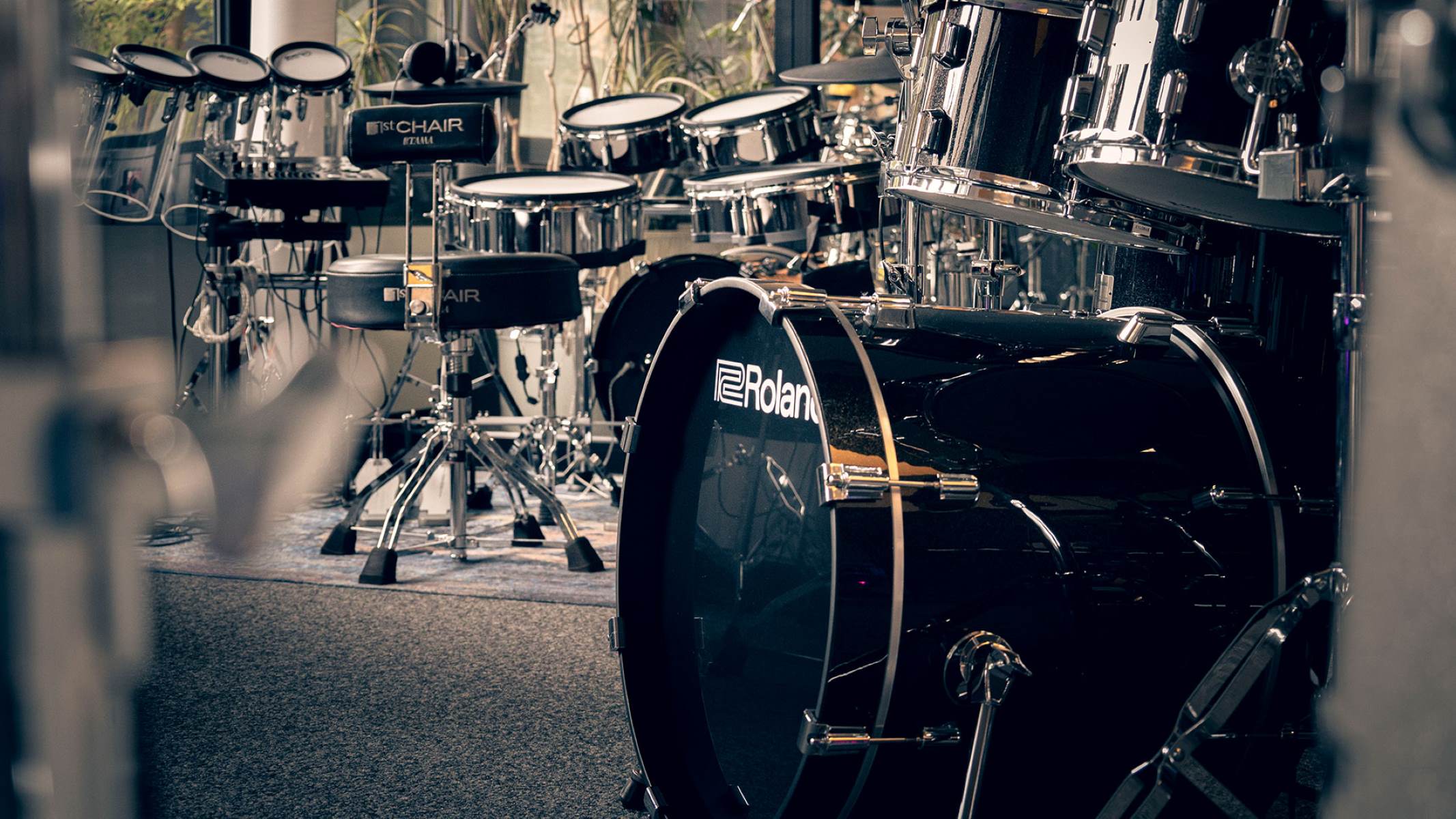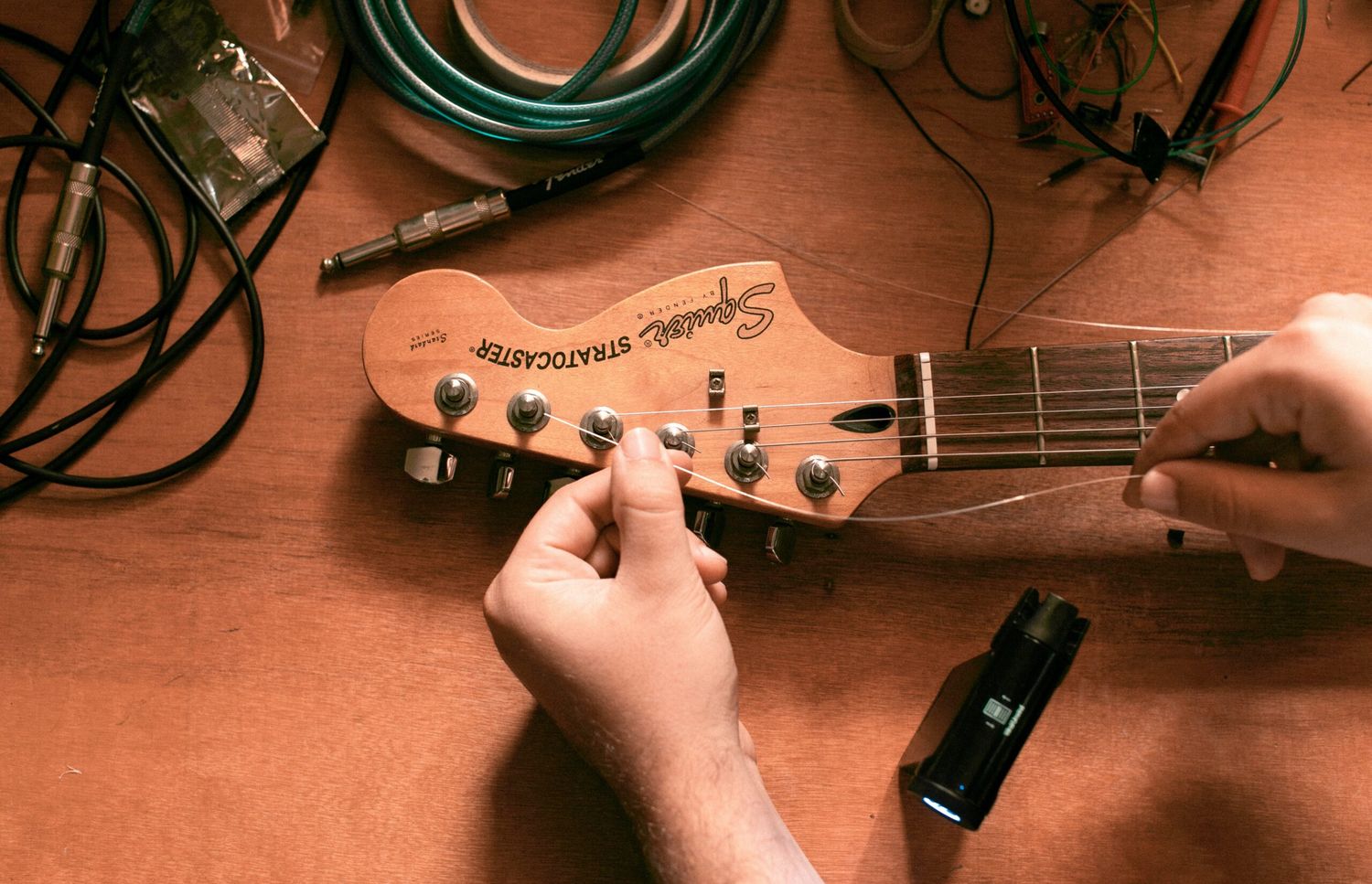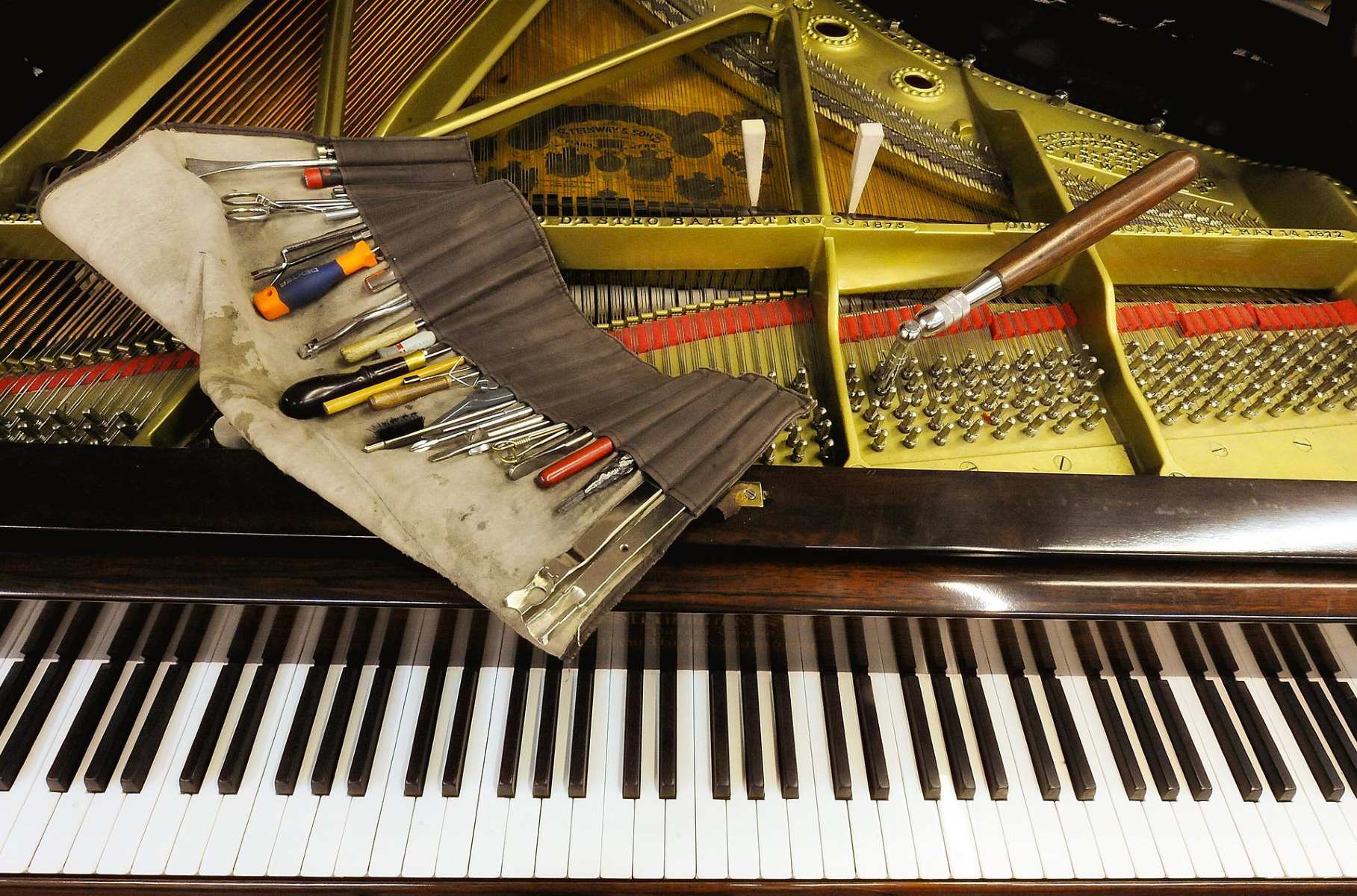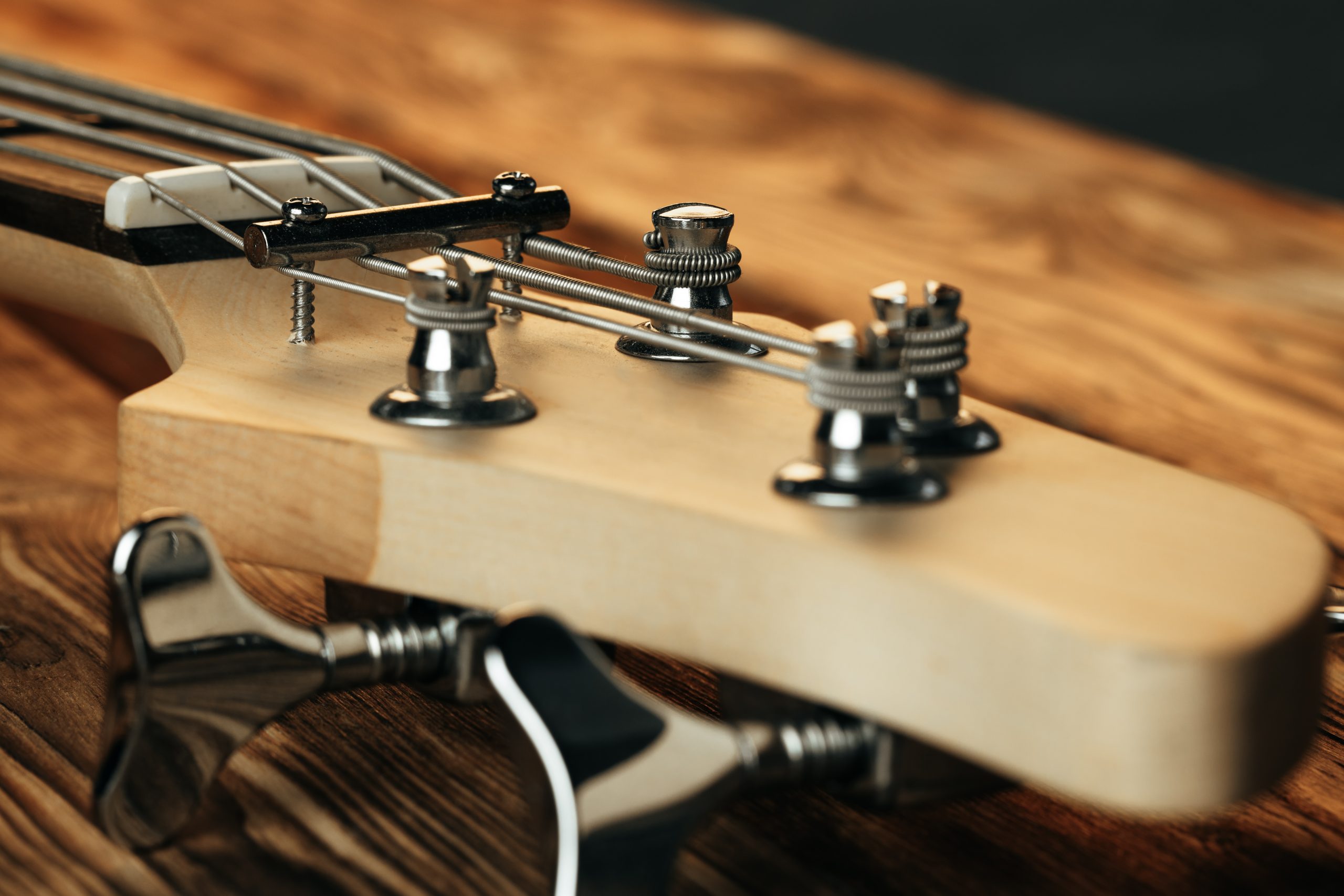Home>Instruments>Drums>What Are Tenor Drums Tuned To


Drums
What Are Tenor Drums Tuned To
Published: February 9, 2024
Learn about the tuning of tenor drums and their importance in drum ensembles. Understand the role of drums in creating rhythm and harmony. Find out more about drums and their significance in music.
(Many of the links in this article redirect to a specific reviewed product. Your purchase of these products through affiliate links helps to generate commission for AudioLover.com, at no extra cost. Learn more)
Table of Contents
- Understanding the Importance of Tuning Tenor Drums
- An Overview of Tenor Drums
- The Art and Science of Achieving Optimal Sound
- Exploring Techniques for Precision and Versatility
- Exploring Harmonious Arrangements for Tenor Drums
- Influential Elements Shaping Tonal Quality and Musical Expression
- Enhancing Sound Quality and Musical Versatility
- Elevating Musical Expression through Tuned Percussion Artistry
Introduction
Understanding the Importance of Tuning Tenor Drums
Tuning tenor drums is a crucial aspect of achieving a captivating and resonant sound in a drumline. These drums, also known as quads, consist of multiple drums of varying sizes, typically ranging from 8 to 14 inches in diameter. Each drum produces a distinct pitch, contributing to the overall melodic and rhythmic richness of the ensemble. Understanding the nuances of tenor drum tuning is essential for drummers and instructors seeking to optimize the sonic quality and musical impact of their performances.
Tuning tenor drums involves adjusting the tension of the drumheads to produce specific pitches, ensuring that each drum complements the others harmoniously. This process not only influences the tonal quality but also affects the projection, sustain, and overall blend within the drumline. As such, mastering the art of tenor drum tuning empowers musicians to create a cohesive and dynamic sound that elevates the entire ensemble's performance.
In this comprehensive guide, we will delve into the intricacies of tuning tenor drums, exploring various tuning systems, popular configurations, and the factors that influence drum tuning. Additionally, we will provide valuable tips for achieving optimal results when tuning tenor drums, empowering drummers and instructors to enhance their musical expression and elevate their performances. Whether you are a seasoned percussionist or a novice drummer eager to refine your skills, this article will equip you with the knowledge and insights necessary to navigate the art of tenor drum tuning with confidence and proficiency.
Understanding Tenor Drums
An Overview of Tenor Drums
Tenor drums, also referred to as quads or multi-tenors, are an integral component of modern drumlines, adding depth, complexity, and melodic richness to the ensemble’s sound. These drums typically consist of four or more individual drums, each producing a distinct pitch. The sizes of the drums may vary, commonly ranging from 8 to 14 inches in diameter, with each drum contributing a specific note to the overall musical arrangement.
Unlike traditional snare or bass drums, tenor drums are designed to be worn using a harness, allowing the drummer to play them while marching or performing intricate choreography. This mobility enables tenor drummers to contribute to the visual spectacle of a marching band’s performance while delivering impactful rhythmic and melodic elements to the musical composition.
One of the defining features of tenor drums is their melodic potential. By harnessing the individual pitches of each drum, drummers can execute intricate rhythmic patterns and create compelling melodic sequences within the drumline’s performance. This melodic versatility sets tenor drums apart from other percussion instruments, offering a unique opportunity to blend rhythm and melody seamlessly.
Furthermore, tenor drums play a pivotal role in enhancing the overall harmonic texture of the drumline. When tuned and played with precision, these drums contribute to the ensemble’s tonal depth and musical expression, elevating the collective impact of the percussion section.
Understanding the distinct characteristics and musical capabilities of tenor drums is essential for drummers and instructors aiming to harness the full potential of these instruments. By recognizing the melodic, rhythmic, and harmonic significance of tenor drums, musicians can approach their tuning and performance with a deeper appreciation for the instrument’s role in shaping the overall musical landscape.
Tuning Tenor Drums
The Art and Science of Achieving Optimal Sound
Tuning tenor drums is a meticulous process that involves adjusting the tension of the drumheads to produce specific pitches. This fundamental aspect of percussion performance and ensemble music requires a blend of technical proficiency, musical intuition, and a keen ear for tonal nuances.
When tuning tenor drums, the primary goal is to ensure that each drum produces a distinct and consistent pitch that complements the overall musical arrangement. Achieving this harmonious blend of tones involves carefully tensioning the drumheads to attain the desired pitch while considering factors such as drum size, shell material, and playing environment.
The tension of the drumheads directly influences the pitch, sustain, and tonal quality of each drum. By tightening or loosening the tension rods and lugs around the drumhead’s perimeter, drummers can fine-tune the pitch to align with the desired musical composition. This process demands precision and patience, as even slight adjustments can significantly impact the drum’s sound and overall contribution to the ensemble.
Furthermore, the tuning process extends beyond individual drums, encompassing the collective tuning of the entire set of tenor drums. Ensuring that the drums work in harmony as a cohesive unit is essential for creating a balanced and melodically rich sound within the drumline.
Mastering the art of tenor drum tuning involves developing a nuanced understanding of pitch relationships, harmonic intervals, and the interaction between multiple drums. This proficiency empowers drummers to execute intricate rhythmic patterns and melodic sequences with precision, enhancing the musical depth and expressive potential of the ensemble.
Ultimately, tuning tenor drums is both an art and a science, requiring a delicate balance of technical expertise and musical sensibility. By honing their tuning skills, drummers can elevate the sonic impact of their performances, captivating audiences with the resonant and harmonically rich sound of a well-tuned tenor drum ensemble.
Tenor Drum Tuning Systems
Exploring Techniques for Precision and Versatility
Several tuning systems and methodologies are employed to achieve optimal pitch and tonal consistency across tenor drums. Each system offers distinct advantages and considerations, catering to the diverse musical preferences and performance requirements of drummers and ensembles.
One prevalent tuning system utilized for tenor drums is the fundamental pitch matching approach. In this method, each drum is tuned to a specific fundamental pitch, typically corresponding to a musical note in the ensemble’s repertoire. By aligning the drums with predetermined pitches, drummers can ensure that the collective sound of the tenor drums resonates harmoniously with the overall musical composition, enhancing tonal coherence and melodic clarity.
Another popular tuning system involves utilizing intervallic relationships to establish a musical scale across the tenor drums. This approach enables drummers to create melodic sequences and harmonies by tuning the drums to specific intervals, fostering musical creativity and expressive versatility within the percussion ensemble.
Furthermore, some drummers employ relative tuning techniques, where the pitch of each drum is adjusted in relation to the others, rather than adhering to absolute pitch values. This method allows for dynamic adjustments based on the musical context, facilitating seamless transitions between different musical passages and enhancing the adaptability of the tenor drum ensemble.
Additionally, the concept of harmonic tuning is integral to achieving a balanced and resonant sound across tenor drums. By considering the harmonic relationships between the drums and fine-tuning their pitches to align with harmonic principles, drummers can optimize the tonal blend and sonic impact of the ensemble, fostering a cohesive and musically compelling performance.
Exploring and mastering these diverse tuning systems empowers drummers to tailor their approach to match the musical repertoire, performance venue, and artistic vision, ultimately enhancing the expressive range and sonic depth of the tenor drum ensemble.
Popular Tuning Configurations
Exploring Harmonious Arrangements for Tenor Drums
Various tuning configurations are favored by drummers and instructors to achieve specific tonal characteristics and melodic arrangements within the tenor drum ensemble. These configurations, often tailored to suit diverse musical styles and performance contexts, contribute to the distinctive sonic identity and expressive potential of the percussion section.
One prevalent tuning configuration involves utilizing a consistent intervallic relationship between the drums, such as fourths or fifths. This approach establishes a melodic framework that facilitates fluid transitions between drums while enabling the execution of captivating rhythmic and melodic patterns. By maintaining uniform intervals, drummers can create cohesive and harmonically rich musical sequences, enhancing the ensemble’s melodic impact.
Another popular configuration entails tuning the tenor drums to form a specific musical scale. By aligning the drums with a predetermined scale, such as a diatonic or pentatonic scale, drummers can unlock the melodic potential of the ensemble, allowing for the seamless integration of melodic motifs and harmonic embellishments within the percussion arrangement.
Furthermore, some configurations prioritize creating chordal structures across the tenor drums, enabling the ensemble to produce harmonically rich and sonically engaging passages. By carefully tuning the drums to form chord tones, drummers can introduce harmonic depth and complexity to the percussion section, elevating the overall musical expression and tonal resonance of the ensemble.
Additionally, certain tuning configurations emphasize the establishment of tonal centers within the tenor drum ensemble. By anchoring specific drums to serve as tonal references or focal points, drummers can create a sense of tonal gravity and harmonic stability, enriching the musical landscape and providing a foundation for rhythmic and melodic exploration.
Exploring and implementing these popular tuning configurations empowers drummers to shape the sonic identity of the tenor drum ensemble, fostering melodic richness, harmonic depth, and expressive versatility within the percussion section’s musical repertoire.
Factors Affecting Tenor Drum Tuning
Influential Elements Shaping Tonal Quality and Musical Expression
Several factors play a pivotal role in shaping the tuning process and tonal characteristics of tenor drums, influencing the instrument’s sonic quality, melodic potential, and overall musical expression within the ensemble. Understanding these influential elements is essential for drummers and instructors seeking to optimize the tonal coherence and expressive versatility of the tenor drum ensemble.
One influential factor is the drumhead material, which significantly impacts the tonal characteristics and resonance of the tenor drums. Different drumhead materials, such as coated or clear heads, offer distinct tonal qualities and sustain, allowing drummers to tailor the instrument’s sound to suit the musical repertoire and performance environment.
Furthermore, the drum shell material plays a crucial role in shaping the tonal projection and resonance of tenor drums. Shells constructed from materials like birch, maple, or fiberglass yield varying tonal characteristics, influencing the overall sonic impact and harmonic richness of the ensemble. Understanding the sonic properties of different shell materials empowers drummers to make informed decisions when selecting and tuning tenor drums.
The drum size and depth also affect the instrument’s pitch range and tonal depth. Larger drums tend to produce lower pitches with enhanced resonance, while smaller drums offer higher pitches and greater articulation. By considering the size and depth of each drum within the ensemble, drummers can orchestrate a balanced and harmonically rich tonal palette, optimizing the melodic potential of the tenor drum arrangement.
Moreover, the playing environment and performance venue exert a significant influence on tenor drum tuning. Factors such as temperature, humidity, and acoustics can impact the instrument’s pitch stability and tonal consistency. Adapting the tuning to accommodate the specific characteristics of the performance space is essential for ensuring a cohesive and resonant sound during live performances.
Additionally, the choice of mallets or sticks can affect the tonal articulation and projection of the tenor drums. Different mallet materials and weights yield varying degrees of attack, sustain, and tonal clarity, allowing drummers to fine-tune the instrument’s articulation and dynamic range to suit the musical arrangement and expressive intent.
By considering these influential factors and their impact on tenor drum tuning, drummers can navigate the tuning process with precision and artistry, harnessing the instrument’s sonic potential and melodic versatility to elevate the expressive depth and musical impact of the ensemble.
Tips for Tuning Tenor Drums
Enhancing Sound Quality and Musical Versatility
Mastering the art of tuning tenor drums is a nuanced and rewarding endeavor that empowers drummers to shape the instrument’s tonal characteristics and melodic potential. By implementing effective tuning techniques and leveraging valuable insights, drummers can optimize the sound quality and expressive versatility of the tenor drum ensemble. Here are essential tips for tuning tenor drums:
- Develop a Systematic Approach: Establish a structured tuning process, starting with fundamental pitch matching and gradually refining the tonal consistency and harmonic relationships across the drums. A systematic approach fosters precision and coherence in the tuning process.
- Consider Musical Context: Tailor the tuning to align with the musical repertoire and performance requirements. Adapting the pitch and tonal characteristics of the tenor drums to suit the ensemble’s musical style and expressive intent enhances the instrument’s contribution to the overall performance.
- Utilize Tuning Gauges: Employ tuning gauges to ensure uniform tension across the drumheads, promoting consistent pitch and tonal clarity. This meticulous approach facilitates precise adjustments and enhances the overall tonal balance within the ensemble.
- Embrace Harmonic Tuning Principles: Leverage harmonic tuning concepts to establish tonal coherence and melodic richness across the tenor drums. By considering the harmonic relationships between the drums, drummers can create a harmonically unified and musically compelling ensemble sound.
- Monitor Pitch Stability: Regularly monitor the pitch stability of the tenor drums, especially in response to environmental factors. Fine-tune the drums as needed to maintain consistent pitch and tonal quality, ensuring a reliable and resonant sound during performances.
- Collaborate with Ensemble Members: Engage in collaborative tuning sessions with other percussionists and ensemble members to refine the collective sound of the tenor drum ensemble. Leveraging diverse perspectives and musical insights enriches the tuning process and fosters a unified sonic vision.
- Experiment with Tuning Configurations: Explore various tuning configurations and intervallic relationships to unlock the melodic potential and harmonic depth of the tenor drums. Experimenting with different configurations broadens the expressive range and creative possibilities within the percussion arrangement.
- Adapt to Performance Environments: Anticipate and adapt the tuning to accommodate the acoustics and environmental conditions of performance venues. Fine-tuning the drums based on the specific characteristics of the performance space ensures optimal tonal projection and resonance.
By incorporating these tips into the tuning process, drummers can refine their approach, elevate the tonal quality, and enhance the expressive versatility of the tenor drum ensemble, ultimately delivering captivating and musically compelling performances.
Conclusion
Elevating Musical Expression through Tuned Percussion Artistry
Tuning tenor drums is a multifaceted and dynamic pursuit that intertwines technical precision with artistic expression, offering drummers and instructors a pathway to elevate the sonic impact and melodic versatility of the percussion ensemble. By delving into the intricacies of tenor drum tuning, musicians acquire the knowledge and skills necessary to shape the tonal characteristics, harmonic depth, and expressive potential of the ensemble’s sound, ultimately fostering captivating and musically compelling performances.
Understanding the importance of tuning tenor drums as a means to achieve tonal coherence, melodic richness, and harmonic depth within the ensemble lays the foundation for a nuanced and immersive musical journey. The art and science of tuning tenor drums encompass a diverse array of methodologies, configurations, and influential factors, each contributing to the instrument’s sonic identity and expressive range.
From fundamental pitch matching to exploring harmonic relationships and embracing diverse tuning configurations, drummers embark on a creative exploration that transcends technical proficiency, inviting them to infuse the ensemble’s sound with their artistic vision and musical sensibility. The collaborative nature of tuning sessions and the adaptability to performance environments further enrich the tuning process, fostering a unified sonic vision and ensuring resonant and reliable sound during live performances.
By implementing systematic tuning approaches, leveraging harmonic principles, and embracing collaborative exploration, drummers refine the tonal quality and expressive versatility of the tenor drum ensemble, crafting a melodic landscape that resonates with depth, clarity, and emotive power. These efforts culminate in performances that captivate audiences, elevate musical expression, and showcase the harmonic richness of tuned percussion artistry.
Ultimately, the art of tuning tenor drums transcends technical proficiency, inviting drummers to embark on a musical odyssey marked by creativity, precision, and expressive depth. As drummers navigate the intricacies of tenor drum tuning, they sculpt an immersive sonic tapestry that enriches the ensemble’s musical narrative, leaving an indelible imprint on the hearts and minds of audiences.











